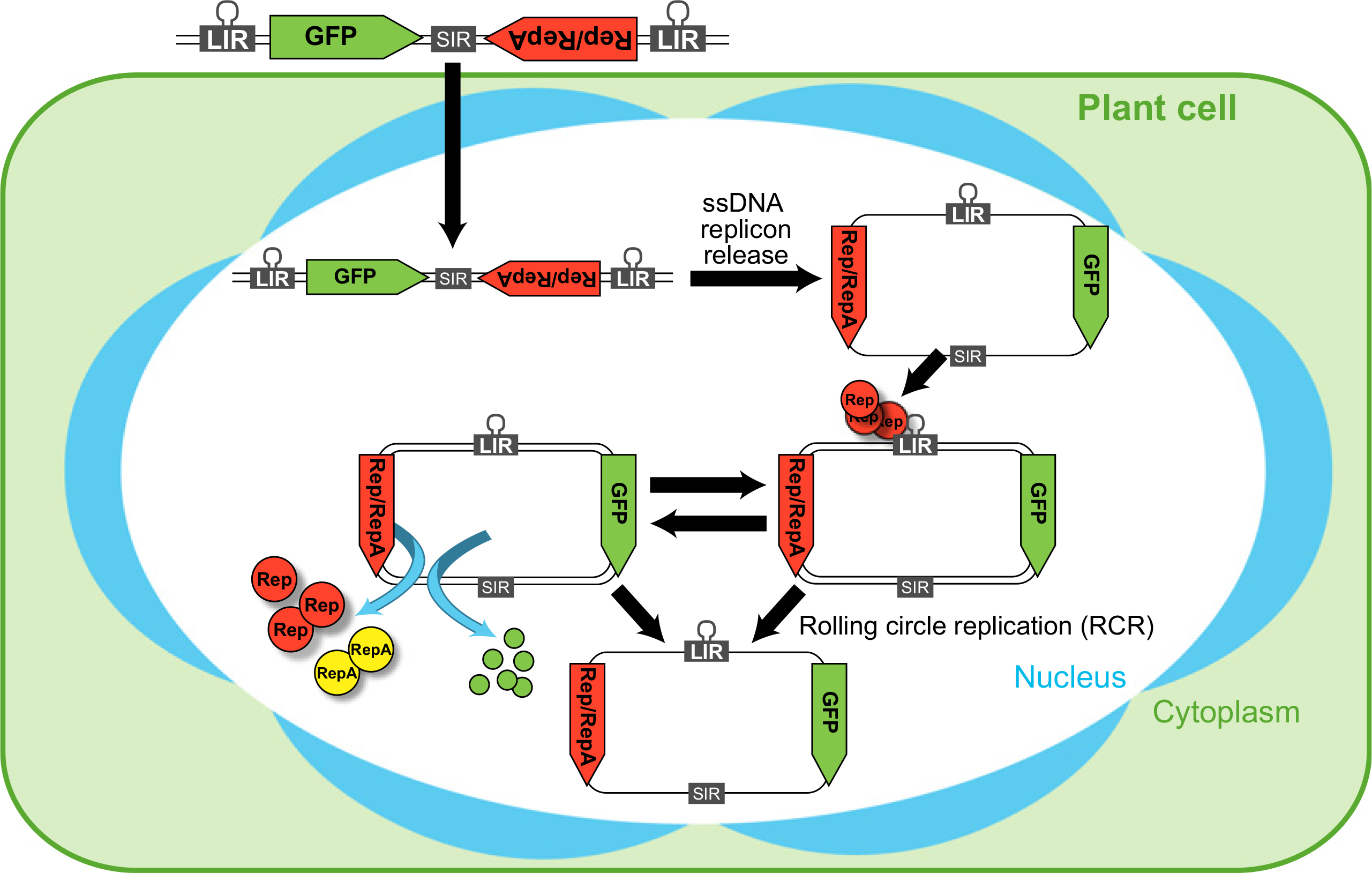Figure 1.

Replication cycle of wheat dwarf virus (WDV)-derived replicons in transformed plant cells. For genome engineering purposes, the WDV-derived replicon is delivered into plant cell nuclei by either particle bombardment (double-stranded DNA, dsDNA) or Agrobacterium-mediated transformation (single-stranded DNA, ssDNA). Then, an ssDNA replicon is released and converted into dsDNA by host polymerases. The replication initiation protein (Rep) recognizes a domain in the large intergenic region (LIR) and nicks the DNA at a 9-nt conserved site found on the hairpin structure of the LIR to promote rolling circle replication (RCR). As a result, newly synthesized ssDNA replicons are formed and converted again into dsDNA replicons. The new dsDNA replicons can be used to either express the encoded proteins (Rep, RepA and heterologous proteins such as GFP) or start a new RCR cycle.
